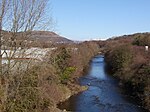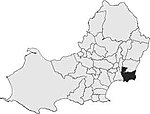Swansea East Dock railway station
1880 establishments in Wales1936 disestablishments in WalesDisused railway stations in SwanseaFormer Great Western Railway stationsPages with no open date in Infobox station ... and 4 more
Railway stations in Great Britain closed in 1936Railway stations in Great Britain opened in 1880Use British English from June 2021Wales railway station stubs

Swansea East Dock railway station served the city of Swansea, in the historical county of Glamorganshire, Wales, from 1880 to 1936 on the Swansea and Neath Railway.
Excerpt from the Wikipedia article Swansea East Dock railway station (License: CC BY-SA 3.0, Authors, Images).Swansea East Dock railway station
Fabian Way, Swansea Waterfront
Geographical coordinates (GPS) Address Nearby Places Show on map
Geographical coordinates (GPS)
| Latitude | Longitude |
|---|---|
| N 51.6213 ° | E -3.9269 ° |
Address
Fabian Way
Fabian Way
SA1 8BP Swansea, Waterfront
Wales, United Kingdom
Open on Google Maps







